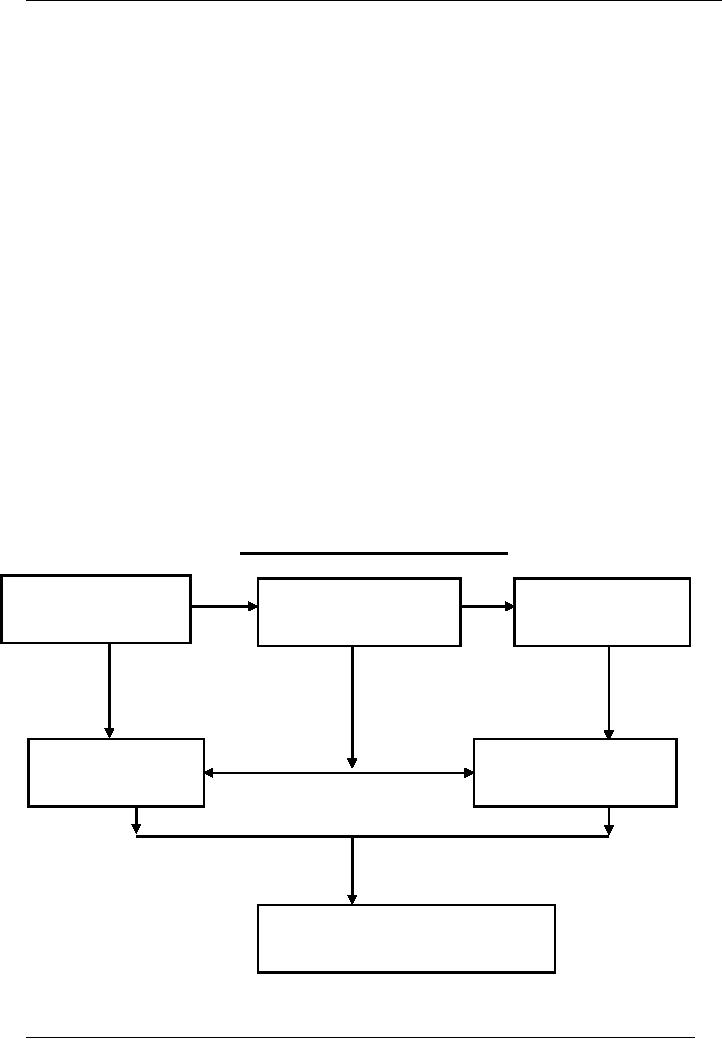 |

Advertising
and Promotion (MKT621)
VU
Lesson
7
ROLE
AND FUNCTIONS OF
ADVERTISING
LECTURE
OVERVIEW
In
this lecture we will study
more about the role and
function of Advertising and
Advertising
agencies.
How do these work and what
are different types .We will
explain about their
structure
and
guide about the ways to
select an agency.
ROLE
& FUCTIONS OF ADVERTISING
·
Acquire
enhanced volumes of sales of products
& services.
·
Generate
awareness about
offerings.
·
Induce
trial of a new product &
service.
·
Motivate
& impress trade channels.
·
Change
perception & create
reassurance.
·
Acquire
enhanced volumes of sales of products
& services.
·
Generate
awareness about
offerings.
·
Induce
trial of a new product &
service.
·
Motivate
& impress trade channels.
·
Change
perception & create
reassurance.
·
Acquire
enhanced volumes of sales of products
& services.
·
Generate
awareness about
offerings.
·
Induce
trial of a new product &
service.
·
Motivate
& impress trade channels.
·
Change
perception & create
reassurance.
PURPOSE
OF ADVERTISING AGENCIES
·
Advise
& counsel on marketing
strategy.
·
Advise
& counsel on advertising and media
strategy.
·
Prepare
& develop, print, outdoor, and
electronic advertisement.
·
Carry
out collateral designs of
various items such as
display material & other
display
material.
·
Help
& counsel on sales promotion &
other communication tasks.
Different
Types of Agencies
Type
of Agency
Role
Full
Service Agency
Provides
all marketing communication
services.
Creative
Agency
Provides
writing of ad copy & design
service.
A
Media Independent
Offers
buying space & time &
related research.
A
Composite Agency
Offers
both creative & media services with
research
Structure
of an Advertising Agency
Account
Executive: Organizes the
resources of the agency to
solve the problems of the
client.
The
Creative Team: Basically comprises of a
writer and a designer.
Account
Planner or Researcher: Responsible for
the data and market
intelligence on the
account
Media
Planner: This team actually
makes the campaign come
live.
Account
Director: Overall responsible of
providing service to clientele of
the agency.
Creative
Director: Overall incharge
for the creative and the
artwork of agency's
clients.
14

Advertising
and Promotion (MKT621)
VU
Media
Director: Responsible for media
planning of the buying
activities of the
agency
Production
House: This is the
department which brings
alive the creative art
work of creative
team.
Release
to Media: All finished material is
ensured to be with the media several days
before the
launch
date
How
are Advertising Agencies
Paid
·
Paid
by Media & not by Client by an
agreed percentage of commission
for
advertisements
released.
·
An
agreed commission is charged on services
like production cost
etc.
How
to Select an Advertising
Agency
Following
points should be considered before
selecting an agency:
·
Name
& Address etc.
·
Agency
History.
·
Year
of establishment.
·
Ownership
pattern.
·
Team
of professionals.
·
Size
of turnover... Annual
reports.
·
Growth
trends.
·
Revenue
& Billing for last 5
years.
·
Clients
won & lost in last 3
years.
·
Agency
mission.
SYNERGISTIC
FLOW BETWEEN
MARKETING
& ADVERTISING
Marketing
Marketing
Action
Objectives
Strategies
Plan
Advertising
Advertising
Objectives
Plan
FEED
BACK
Measuring
Advertising
Effectiveness
15
Table of Contents:
- INTRODUCTION TO ADVERTISING:Its growing importance, Explanation of Personal and non-personal selling
- INTRODUCTION TO ADVERTISING:ADVANTAGES, Communication, Information, Various Media
- INTRODUCTION TO ADVERTISING:FUNCTIONS OF ADVERTISING, IMPACT OF ADVERTISING
- ADVERTISING AND SOCIETY:PRACTICAL BENEFITS, ETHICS IN ADVERTISING, Marketplace & Market space
- MARKETING TOOLS:COMPONENTS OF MARKETING MIX, PRODUCT LIFE CYCLE (PLC) CURVE
- MARKETING TOOLS:SWOT Analysis, Contents & Structure, ROLE & FUNCTION OF ADVERTISING
- ROLE AND FUNCTIONS OF ADVERTISING:Structure of an Advertising Agency, How to Select an Advertising Agency
- ADVERTISING PLANNING:ADVERTISING OBJECTIVES, Types of Advertising, Positioning Strategies
- POSITIONING:BRANDING, 7 Steps of Creative Process, UNIVERSAL ADVERTISING STANDARDS
- ADVERTISING MESSAGE:Message Content, BASIC TERMS & CONCEPTS
- ADVERTISING BUDGET:4 Methods to determine, ADVERTISING RESEARCH, ADVERTISING RESEARCH
- ADVERTISING REACH:BROAD COMMUNICATION OBJECTIVES, ADVERTISING COPY METHODS, MEDIA RESEARCH
- PRE – PLACEMENT EVALUATION:ACCOUNT PLANNING, MARKET, COMPETITION
- WORKING OF ADVERTISING:12 Steps to develop effective campaign, SOURCE or THE ADVERTISER
- ADVERTISING RESPONSE HIERARCHY MODELS:AIDA MODEL, PROCESS REQUIRED TO GET BIG IDEA
- PROBLEM SOLVING STRATEGIES:Procedure to Handle Problems, In brief, Eight principles apply to consumer behavior
- CONSUMER BEHAVIOUR:ADVERTISING APEALS, MEDIA MIX DECISIONS, Target Rating Point (TRP)
- CREATIVITY IN ADVERTISING:Three aspects are most accepted, Four Rules of Creativity
- COPY WRITER:CHARACTERISTICS OF COPYWRITER, IMPORTANCE OF LANGUAGE
- WHY ADVERTISING:Advertising & Market Education, ADVERTISEMENT CAMPAIGNS
- METHODS TO APPRECIATE A PROBLEM:SPONSORSHIP—an important tool, Special Characteristics
- IMPORTANT TOOL OF ADVERTISING:TELEVISION ADVERTISING, TRANSIT ADVERTISING
- ONLINE ADVERTISING:Banners, Logos, Email Ads, Keywords on Search Engines, New Developments
- ONLINE ADVERTISING:Structural Challenges, Adobe Photoshop, JAVA, HTML, DHTML, ASP & JSP
- SALES PROMOTION:Consumer Oriented Promotion, HOW TO USE TRADE PROMOTION, Dealing with the Trade
- PUBLICITY:PERSONAL SELLING, ROLE OF SALES PERSON, FUTURE OF GLOBAL ADVERTISING
- MARKETING ENVIRONMENT:Competitors, The Target Buyer, Segmenting your Market, FUTURE OF MARKET GROWTH
- MARKETING PLAN:Situational Analysis, Macro – Environment Situation, Marketing Objectives, Financial Objectives
- MARKETING PLAN:PROMOTING BUSINESS IN LOW COST, SUPPLY CHAIN, BUYER IDENTIFICATION
- HOW TO BE GOOD CLIENTS:CHANNEL BUYERS, HOW TO BE GOOD CLIENTS 14 RULES
- CLIENT – AGENCY RELATIONSHIP:HOW TO KEEP CLIENTS (10 Ways), Three Points for Consideration
- CLIENT – AGENCY RELATIONSHIP:ADVERTISING WITHOUT AN AGENCY, LOGO AND CORPORATE IDENTITY
- NEWSPAPER ADVERTISING:AD PRODUCTION,TYPES OF NEWSPAPER ADS, CIRCULATION
- OTHER ADVERTISING MEDIUM:HOW TO USE MAGAZINES, HOW TO USE RADIO, Daypart buying options
- UTILITY OF VARIOUS MEDIA:TAPE OR FILM, UTILITY OF TV, DIRECT MAIL PACKAGE
- OTHER ADVERTISING MEDIA:POINT OF PURCHASE (POP), TRANSIT ADVERTISING, LIMITS OF ADVERTISING
- CONTINUOUS TRACKING:PLANNING CAMPAIGN, HOW TO UNDERSTAND ADS, ASK BASIC QUESTIONS
- SEASONAL ADVERTISING:MAXIMIZING IMPACT, THE WEB ADVERTISING, MEASURING ADVERTISING
- COMPONENTS OF ADVERTISING:BUY - OLOGY OF MIND, BUY - OLOGY OF MIND
- CRITICISM ON ADVERTISING:SHOULD ADVERTISING BE ABOLISHED,
- EFFECT OF ADVERTISING:HOW TO PROMPT AWARENESS, CREATING DESIGN THAT SELLS
- CREATING EFFECTIVE DESIGN:LANGUAGE OF TYPOGRAPHY, HEADLINES THAT COMMUNICATE
- WORKSHEETS:DEMOGRAPHICS OF YOUR TARGET, YOUR COMPETITOR
- GLOSSARY OF ADVERTISING:ACCOUNT EXECUTIVE, PROOF, VOICE OVER
- CONCEPT OF AN AD:HOW TO DEVELOP A CONCEPT OF AN AD